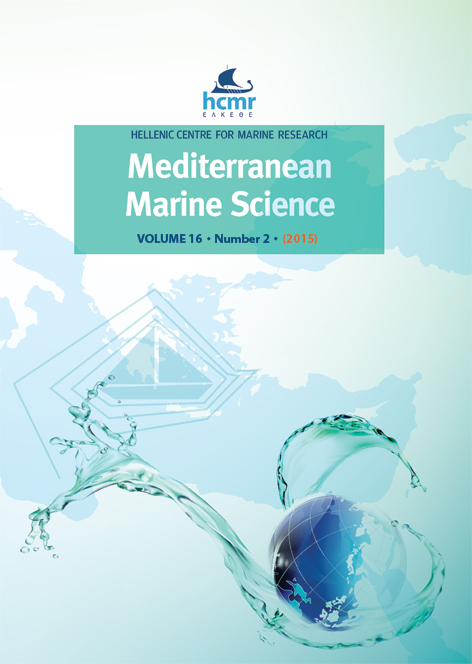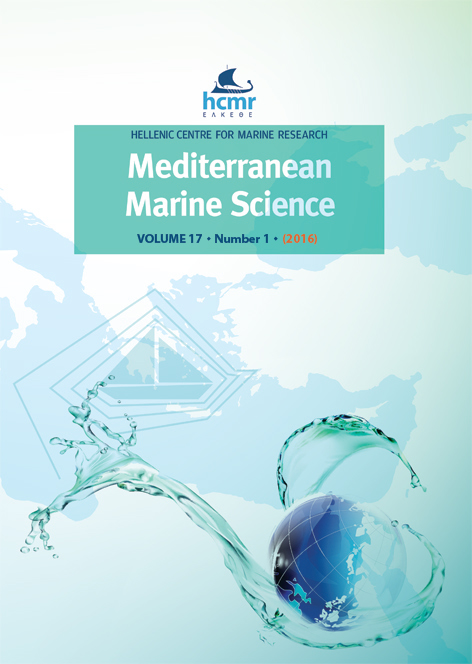Phytoplankton composition and abundance in the coastal waters of the Datça and Bozburun Peninsulas, south-eastern Aegean Sea (Turkey)
Résumé
A study of the abundance and composition of microphytoplankton was carried out in marine areas of the Datça and Bozburun Peninsulas between the years 2002 and 2004. Simultaneously measured physical (salinity, temperature, secchi disc) and chemical parameters (nutrients, chl-a, dissolved oxygen) were assessed together with microphytoplankton data. Seawater and plankton net samples were taken from 63 stations during 6 sampling periods. A total of 132 taxa belonging to 3 taxonomic classes was reported and a checklist of microphytoplankton was prepared for this study area. Average nutrient values in surface water ranged from 0.01 to 1.19 µM for NO3+NO2–N, from 0.01 to 0.69 µM for PO4–P and from 0.50 to 5.31 µM for SiO2–Si and chl–a values were between 0.19 and 0.68 µg l–1 throughout the study area. The highest number of microphytoplankton cells reached 5400 cells l–1 and dinoflagellate Prorocentrum micans reached 1500 cells l–1 while diatom Thalassionema nitzschioides reached 700 cells l–1. Dinoflagellates showed a more homogeneous distribution in a wider area than diatoms. The dinoflagellate abundance increased in areas close to the fish farms due to the amount of nutrients originating there. Spatial changes in phytoplankton composition observed in this marine area revealed that phytoplankton are very sensitive to ecosystem changes. The study area could generally be defined as oligotrophic in terms of trophic status depending on the nutrient and chl–a concentrations. Moreover, very low cell abundance and high species richness observed in this area also reflect typical characteristics of oligotrophic waters.
Article Details
- Comment citer
-
TAS, S. (2013). Phytoplankton composition and abundance in the coastal waters of the Datça and Bozburun Peninsulas, south-eastern Aegean Sea (Turkey). Mediterranean Marine Science, 15(1), 84–94. https://doi.org/10.12681/mms.418
- Numéro
- Vol. 15 No 1 (2014)
- Rubrique
- Research Article
Authors who publish with this journal agree to the following terms:
- Authors retain copyright and grant the journal right of first publication with the work simultaneously licensed under a Creative Commons Attribution Non-Commercial License that allows others to share the work with an acknowledgement of the work's authorship and initial publication in this journal.
- Authors are able to enter into separate, additional contractual arrangements for the non-exclusive distribution of the journal's published version of the work (e.g. post it to an institutional repository or publish it in a book), with an acknowledgement of its initial publication in this journal.
- Authors are permitted and encouraged to post their work online (preferably in institutional repositories or on their website) prior to and during the submission process, as it can lead to productive exchanges, as well as earlier and greater citation of published work (See The Effect of Open Access).







